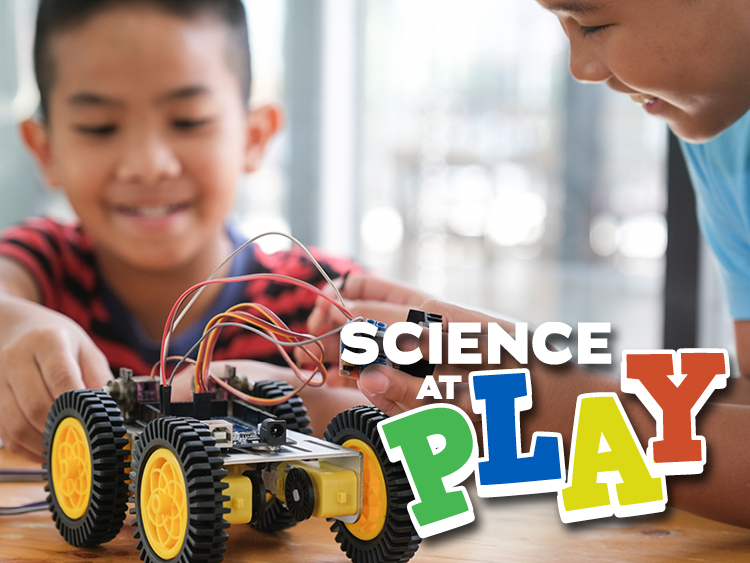Materials to Collect
- Playing card
- Empty plastic bottles
- Cup with a mouth smaller than a playing card
- Thumbtack
- Mesh or screen material
- Rubber band
Try it Out
Prank 1:
- Fill your small cup ¾ of the way full with water and place the playing card flat over the mouth. While holding the card flat over the mouth, flip the cup completely over.
- Gently let go of the card. What happens?
Prank 2:
- Fill a small bottle ¾ of the way full with water and then secure your screen material or mesh flat over the mouth of the bottle using a rubber band.
- Hold your playing card over the mouth as you did before and flip the bottle over.
- This time, slide the card out from under the bottle. What happens?
Note: if the water keeps pouring out, try double layering the mesh over the bottle mouth.
Prank 3:
- Take a thumbtack and poke a few holes in the bottom of an empty bottle.
- Fill the bottle with water (in a sink), and then screw the cap on tightly. When the cap is screwed on, the water should stop coming out of the holes. When the cap is opened, water will come out of the holes.
- Leave your bottle out for your prank victim to find and open!
What is the Science?
The air all around us is constantly exerting a pressure on everything in all directions. We don’t really notice it because it has always been there, but the pressure of the air is 14.7 lbs per square inch. That’s like 3 heavy textbooks piled on every square inch of your body!
In our first prank, the pressure of the air pushes up on the card and holds it to the cup – keeping all of the water safely in the cup. The second prank works just like this with a little extra science. The mesh you placed over the mouth of the bottles has tiny holes. The water in these tiny holes sticks to itself (we call this surface tension), and to the mesh and creates a barrier for the air to push on. Instead of using a playing card, you are using “sticky water” to keep all of the water inside the bottle.
In our last prank, when the cap is on the bottle, the water is held inside exactly the same way as in our second prank. The water sticks together at the holes and forms a barrier for the air around the bottle to push on – holding the water inside. When you take the cap off though, air from the room pushes down on the water, forcing it out through the holes and soaking your prank victim!
Ask Your Young Scientists
- What happens if the holes in our mesh material are too big?
- What happens if we add more or less water to our bottles?
- What types of bottles or cups do these pranks work well with? What kinds don’t work very well?
We want to see what you try at home. Share your creation with us on social media by using the #ScienceAtPlay and tagging @CTScienceCenter.

Justin Riley is the Teen Programs Coordinator and STEM Educator at the Connecticut Science Center, where he works closely with high school students giving them access to STEM and leadership programming. Justin graduated from the University of Hartford with his Bachelors in Electrical Engineering Technology and a Masters degree in Counselor Education and Student Development. Justin has worked several years with a wide range of students from pre-k to college. His love of engineering and mentoring led him to the Connecticut Science Center where he gets to use his many talents to work and connect with the students in the Greater Hartford area. When he is not helping to run the teen program, he spends his time traveling and spending close time with family and friends.



